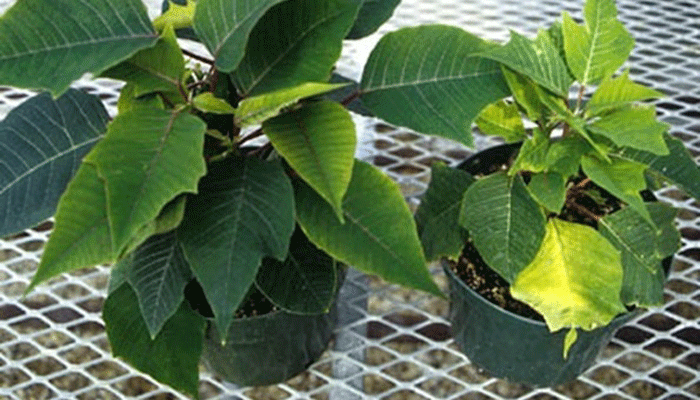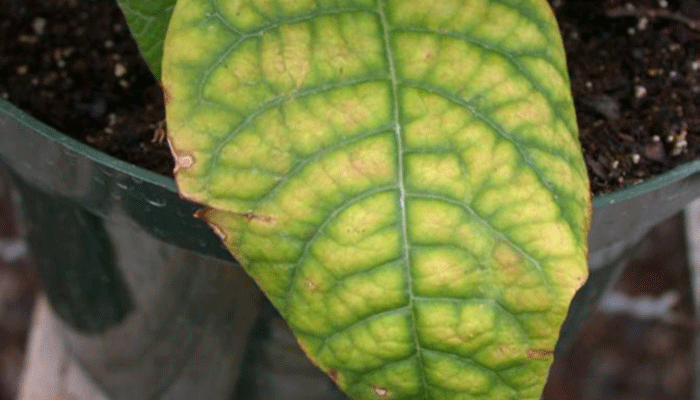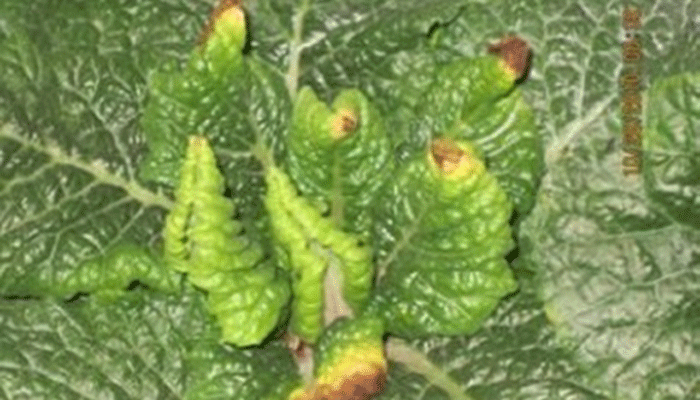Quick guide to topical nutrient deficiencies
The past 12 months, perhaps more than any other, have proved very difficult to predict, says ICL Technical Area Sales Manager, Carl Mason. On top of a worldwide pandemic, growers are having to deal with extreme weather. Having just had one of the wettest years on record, in stark contrast, we’ve just experienced the driest May since records began.

These extremes are often the times where we start to see and notice problems accruing in crops. The high rainfall, particularly in parts of the UK, will have had an effect on the amount of nitrogen available to some crops, as this can be easily leached out; the hot dry May is likely to have made things worse. Higher irrigation rates, to keep crop growing, will have further impacted on the amount of nitrogen and other elements available to crops.
Faced with a lack of Nitrogen, crop growth slows down and plants appear stunted and often turn pale and yellow all over. With ICL’s comprehensive portfolio of controlled release and water-soluble products there is a ready solution depending on your crop and water quality. If unsure which product is best for your particular set of circumstances, contact your ICL Technical Area Sales Manager who will be happy to advise.

Immobile iron
Iron is another element that can often be deficient in crops when sat in water for a long time. Signs of this deficiency are found at the top of the plant and in the youngest leaves. Deficient leaves generally look very pale and yellow, while the veins are darker green. Iron is not very mobile in the plant and therefore the effects of deficiency are generally seen in new leaves.

You can often see iron deficiency in a range of crops – I personally saw it when I was growing dahlias and primroses. The good news is that it can be easily rectified by adding a water-soluble iron chelate mix into your water-soluble feed.
Magnesium & calcium
It’s that time of year where poinsettias will be arriving on nurseries around the country. This crop amazes me as to the amount of time it takes to grow and for all the potential problems that can appear!
Magnesium deficiency can be seen in older leaves; signs to look out for are interveinal yellowing and then scorching of leaf edges. Shortages of this nutrient can also cause premature leaf drop, which in a crop like poinsettia makes the plant look bare. As magnesium is very mobile, you are only likely to see signs on older leaves and it tends to move upwards through the plant.

Calcium deficiency shows in the youngest leaves and in fruits. The deficiency causes stubbing of leaves and tip burning as well as loss of root hairs. Calcium is important for cell wall formation and is always in demand by the plant. While it moves through the plant well, once in the plant tissue it becomes fixed therefore leading to tip burn.

Peters Excel CalMag Grower is designed to help with these two deficiencies while the plant is in the growing stage. Meanwhile, for plants in the flowering stage there is Peters Excel CalMag Finisher
What to do?
If you see signs of these deficiencies in your crops, I recommend you speak to your ICL adviser. If the pH of the growing media is wrong this can have a major effect on the availability of these elements. Water quality - hardness or softness of your water supply - is also an important factor in determining which product to use to rectify any problems you may see.
Often a soil or water sample is advised in order to establish the reasons for deficiencies.
